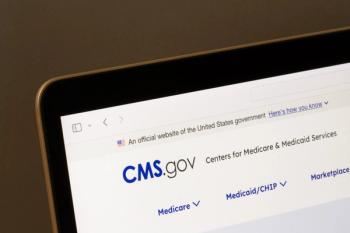
Work group striving to clarify Part D electronic messages
There may be relief in sight for pharmacists frustrated with confusing and even contradictory electronic messages beamed their way by Part D insurance plans, thanks to a work group created by associations representing drugstore chains, independent pharmacy, and health insurance plans.
There may be relief in sight for pharmacists frustrated with confusing and even contradictory electronic messages beamed their way by Part D insurance plans, thanks to a work group created by associations representing drugstore chains, independent pharmacy, and health insurance plans.
The issue of e-messages was recently tackled by representatives from the National Association of Chain Drug Stores, the National Community Pharmacists Association, and America's Health Insurance Plans. The work group zeroed in on problematic messages that have led to pharmacist frustration and hang time on the help desk phone line.
"We've been identifying some of the messages coming back to pharmacists electronically that were inconsistent or confusing. Our overall goal is to make the messages more standard in order to reduce the administrative burden on pharmacists in filling prescriptions or in knowing how, for example, to resolve prior-authorization or drug-not-covered messages," said John Coster, Ph.D., R.Ph., NACDS VP-policy and programs.
Those two confusion-causing areas were relayed to the National Council for Prescription Drug Programs with a request to put them on a fast track to standardization. NCPDP is "working as fast as it can," said Stacey Swartz, Pharm.D., NCPA director-management and educational affairs. "When we do get notification from NCPDP about whether these codes will go through, we look for educational materials to let pharmacists know that they exist and how to handle situations when they come up," she added.
An NCPDP task group has worked on the solution sought by pharmacy and the drug plans, according to Lynne Gilbertson, director of standards development. Entities that use NCPDP standards will be able to implement the solution if or when it's approved, she said, adding that NCPDP is "committed to helping find a standard solution for the industry."
The pharmacy-drug plan work group's goal is to "cut down on the pharmacy getting rejects saying 'not covered' and the pharmacist doesn't really know why," said Swartz. "Pharmacists don't want to be on the phone, and plans don't want to be inundated with phone calls, so we feel if we can get meaningful reject codes that are understandable to both pharmacists and plans, this will be a very useful working group and will help beneficiaries too."
The work group has identified other primary and secondary Part D messages that need some tweaking. For example, if a drug is not on a formulary, the work group would like plans to provide a return message about what is on the formulary, said Coster. Or if a drug requires prior authorization, the work group would like information about why and what the pharmacist needs to do to resolve it. And if plan limitations are exceeded, it would like to know what the days supply is and why the message came back, he added.
"I think the bottom line is that there is movement on helping to standardize some of the messaging coming back to pharmacists," said Coster. "I think it will lead to greater efficiencies not only in Part D but throughout the entire third-party processing world."
Newsletter
Pharmacy practice is always changing. Stay ahead of the curve with the Drug Topics newsletter and get the latest drug information, industry trends, and patient care tips.





















































































































































